The Ultimate Prepper's List of Gear and Supplies for When SHTF

This prepper's list includes all the survivalist gear and supplies you'll need for nearly any situation.
Before diving into the list, we highly recommend that you continue reading our brief introduction, so that you can get the most from this list!
This list contains over 100+ supplies that you would ideally have for a wide variety of SHTF scenarios. We also explain the use for all items and why they will help you survive.
With that said, some of these items may not fit into everyone's budget or be necessary for what you choose to prep for. In fact, by the end of this checklist we fully enter the realm of wishful thinking. Don't worry though, we've taken this into account!
We've grouped supplies into 5 sections and you can jump to each one from the list of links below. In each section, we start with the most basic and essential supplies, then move into the "nice to haves". We've also marked the most essential items with the icon.
No matter what your situation, anyone can start prepping with this list of supplies!
Suggest Reading: New Preppers Should Also Check Out "Prepping 101" and "How to Start Prepping".
+List Summary

Our first sections focus on the rule of threes. For those that don't know, the rule of threes says:
- You can survive three minutes without breathing, in icy water, or severely bleeding.
- You can survive three hours in extremely hot or cold environments.
- You can survive three days without drinkable water.
- You can survive three weeks without edible food.
For us, having clean guaranteed sources of clean water jumps out at us as a rule that requires prepping, while also being a likely downfall common among non-preppers. Storing water is beneficial for every SHTF scenario we can think of.
Ready.gov recommends you store at least one gallon of water per person for three days to cover hydration and sanitation. While this is certainty a start, we'd personally recommend storing at minimum 30 days worth of clean water. For extremely dire situations, you'd almost certainly need more water per day for more days than the Ready.gov recommendation.
It would be hard to argue that you could ever be storing too much water, so feel free to get crazy with it!
You can learn more about water storage here.
1) Bottles of Water
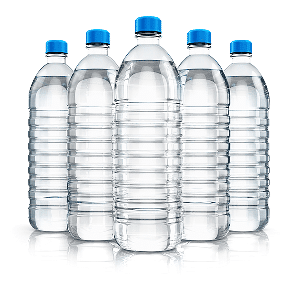
While not the most exciting item on our list, storing bottles of water is the best first step to prepping. It's something everyone can start doing on their next trip to the grocery store.
Bottled water that is FDA approved and unopened lasts for 2+ years. Like with food, we'd recommend stocking up to a comfortable level, then occasionally drinking and replacing what you've stored to make sure it does not pass it's 2 year use by date.
While not the best or most efficient way to store 30 days of water, a household of 3 would need a whopping 30 packs of water bottles (assuming they were 24 packs of 16 oz bottles). With that in mind, the following supplies make storing large amounts of water and sterilizing available water more practical.
2) Portable Water Filter
In the event your on the go and don't have access to safe drinking water, you'll want to be sure to have a portable water filter. In general during a SHTF situation, unless your 100% sure a water source is free of contaminants, it's a good idea to use a filter.
If you know any brand in the space, it's probably LifeStraw. While they're arguably the biggest name in the space, we've found 2 competitors that offer even more protection.
See the table below to compare portable water filters.
| Filter | Type of Filter | Removes Bacteria | Removes Viruses | Removes Lead | Removes Chemicals | Removes Radiation |
|---|---|---|---|---|---|---|
 Seychelle (RAD/ADV Bottle)
Seychelle (RAD/ADV Bottle) | Bottle | ✔ (99.9999%) | ✔ (99.9999%) | ✔ (99.9999%) | ✔ (99.9999%) | ✔ (99.9999%) |
 Pocket Pump 2 Pure (RAD-ADV-PH)
Pocket Pump 2 Pure (RAD-ADV-PH) | Pump | ✔ (99.9999%) | ✔ (99.9999%) | ✔ (99.9999%) | ✔ (99.9999%) | ✔ (99.9999%) |
 Survior Filter® PRO
Survior Filter® PRO | Pump | ✔ (99.999%) | ✔ (99.999%) | (93%) | ||
 Survior Filter® Squeeze Kit
Survior Filter® Squeeze Kit | Straw and Canteens | ✔ (99.999%) | ✔ (99.999%) | |||
 LifeStraw Flex
LifeStraw Flex | Bottle | ✔ (99.999%) |
3) Bleach
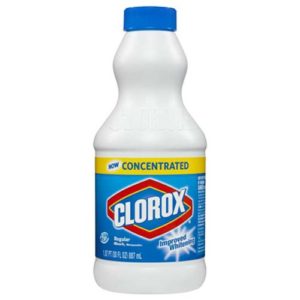
If you're unable to boil water for disinfection, small amounts of bleach is a commonly recommended way to to kill bacteria and viruses in water. If planning to use bleach for this purpose, BE SURE to only use regular, unscented chlorine bleach.
The EPA recommends using a clean dropper to apply very small amounts of bleach to your water supply (amounts shown in the table below). Stir and let it stand for 30 minutes.
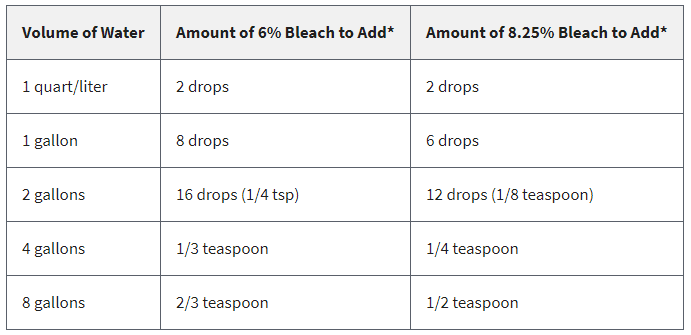
It's very important, however, to understand that bleach has a short shelf life. You should only use unscented, regular bleach that has been stored at room temperature for less than a year.
4) Reusable Water Containers
In addition to purchasing water bottles, you'll find that there are numerous reusable storage containers used by preppers to store larger amounts of water. You'll also find these methods are cheaper long term than regularly purchasing packs of bottled water.
Here's our picks for water containers:

5 Gallon Stackable Water Storage Containers
These 5 gallon containers are in a good middle ground between storing large amounts and being portable. These specific containers are also thicker (high density polyethylene) and more durable than most similar sized options.
Amazon offers a kit of 4 5-gallon containers, 6 lids, 2 spigots, and 1 bottle of water preserver. You can also buy 4 containers without the additional accessories.

55 Gallon Water Storage Barrel
For around the same price as the above option, you can purchase a 55 gallon drum that stores nearly 3 times as much water. The obvious major trade off is portability. When filled with water, this barrel will weigh over 400 lbs.
You'll also need a bung wrench and siphon pump to be able to easily access your water.

The Water Bob
Many preppers plan to fill up their bathtubs for water storage following news of a hurricane or other SHTF scenarios. What this idea fails to take into account is the fact your tub is probably pretty gross!
The Water Bob allows you to store up to 100 gallons of water in your bathtub, without exposing it to the bacteria, scum, and harmful cleaning agents that have been used to clean your tub.

320 Gallon Stackable Water Storage Tanks
These 320 gallon stackable water storage tanks offer a big step up from our previous options, though at a much greater cost. Amazon offers 2 of these tanks sold together (the image shows two of them stacked).
The size, cost, and weight of these tanks definitely limit who could practically use these. Just one of these tanks would weigh over 1 ton when filled with water. Good luck trying to keep these in an apartment.
5) Large Water Filtration Systems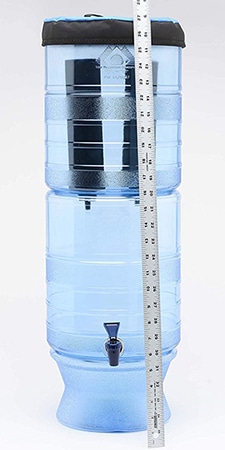
We've already covered small portable water filters, but they aren't the most practical option for filtering large amounts of water. For that we recommend the Berkey Light Water Filtration System.
This system includes both a 2.75 gallon tank and two filters. Combined, the included filters can handle up to 6,000 gallons of water throughout their lifespan.
The Berkey Light is capable of purifying up to 4 gallons of water per hour, without requiring electricity or water pressure. Its micro-filtration system removes 99.99% of bacteria and viruses.
Though not as portable as our previous options due to its larger size, the Berkey Light is still lightweight at 5.6 lbs (when empty, around 30 lbs when full). This could certainty be a part of any preppers bugout gear.
You may also want to pick up some Berkey replacement filters, if your concerned about the 6,000 gallon lifespan.
Food, Nutrition, and Cooking

As we continue our focus on the rule of threes, humans can typically survive a maximum of 3 weeks without food. Admittedly, it's astounding and even slightly comforting how far our bodies can be pushed in the event we have no food to eat.
With that said, this is NOT an excuse to pass on prepping food supplies. You'll of course need calories to maintain comfort and energy during a SHTF scenario.
You also can't be sure how long you'll need to live off your stored food supplies. Like with water, the more food you stock up on the better.
Unlike with water, the food a prepper decides to store should take into account the prepper's individual taste. You should of course also choose your foods around any dietary restrictions and any food allergies you or your family may have.
It's also important to note, the type's of food you associate with a healthy diet may not be practical when your focus switches to survival. For example, I eat almost entirely meats and fresh vegetables in my normal life, but accept there are a variety of scenarios to prep for where these foods would not be practical or possible.
In this section, we cover the foods, supplements, and cooking gear you'll want to have when SHTF.
Calorically Dense, Long Lasting, Low Prep Bulk Foods
The first food supplies any prepper should begin storing should be foods that:
- Have a very long shelf life.
- Are calorically dense.
- Are easy to store (eg: don't require refrigeration)
- Require little to no food preparation (eg: cooking, etc).
We'll split these foods into Carbs, Proteins, and Fats (though some of these foods will of course be high in multiple macronutrients).
We've also written a full guide to The Best Prepper Foods Here.
6) Bulk Carbohydrates
When it comes to calorically dense bulk foods, chances are your mind already goes to foods high in carbs.
The table below compares some of the best options for stocking up on high carb foods. If you're looking to buy bulk foods online, we highly recommend checking out Augason Farms. In addition to the individual foods shown below, Augason Farms also offers variety packs of different foods for various time lengths.
| Foods | Max Shelf Life |
|---|---|
 White or Brown Rice
White or Brown Rice | 30 Years |
 Oatmeal
Oatmeal | 25 Years |
 Rolled Oats
Rolled Oats | 20 Years |
 Pinto Beans
Pinto Beans | 30 Years |
For best shelf life, all foods shown above should be stored in a cool dry place at temperatures between 55°F and 70°F.
7) Bulk Protein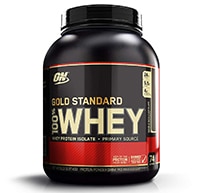
Protein is an often lacking macronutrient when it comes to survival foods. With that it mind, it's a good idea to stock up on a concentrated source of protein. This should allow you to supplement any survival diet to the point of adequate protein consumption.
For that, I'd recommend a simple whey protein powder. The fitness market is filled with ridiculous claims and nonsense, but I generally just use any cheap whey protein powder.
Typically, these products have a shelf life of a few years.
You may also want to pick up a few shaker bottles so that you can more easily mix protein powder or nearly anything else with water.
Another highly concentrated source of protein is dried meats, like beef jerky. The vast majority of the calories from beef jerky are in the form of protein, making it another great way to ensure adequate protein consumption.
Typically, beef jerky is good for 1-2 years.
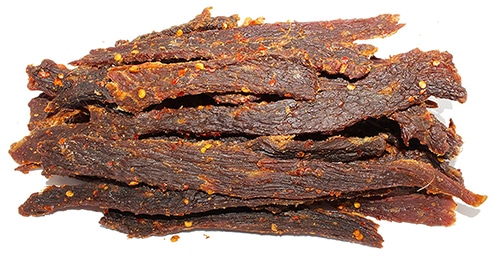
Due to the shorter shelf lives of these foods, compared to the carb sources above, you'll most likely want to use and replace these regularly in your daily life.
8) Bulk Fats
Where as protein and carbs have about 4 calories per gram, fat contains 9 calories per gram. This leads to many fat sources being extremely high in calories for the space they take to store.
Cooking oils like coconut oil, olive oil, and avocado oil are great ways to add calories to your meals. In a pinch, you could even drink small amounts of these for a quick burst of calories, though larger amounts may cause intestinal distress.
Shelf life tends to vary between high fat oils, but many last 1-2 years. Like our bulk proteins, you'll likely want to use and replace bulk fats.
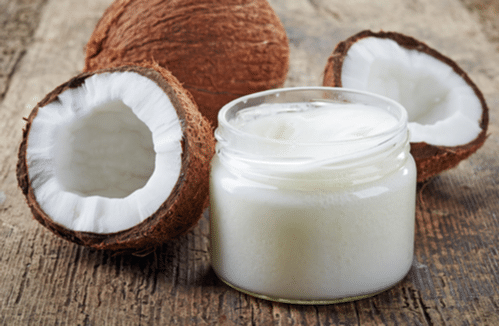
More Long Lasting Foods
In the above section, we focused on very calorically dense bulk foods that last a very long time. In this section, we'll include more complete foods that may have a somewhat shorter shelf life.
9) Canned Goods
We could list an almost endless supply of different canned goods, but we'll avoid making this long guide even longer by doing so. Here's some ideas to get you started.
- Canned meats and fish like beef chunks, chicken chunks, and tuna can last 5+ years when stored properly.
- Canned soups and stews are typically good for 1-6 years.
- Canned vegetables usually last a range of 1-4 years.
- Peanut butter lasts up to 1 year.
Always make sure your canned goods are undented and stored below 75°F.
10) Protein Bars
Protein bars offer a great meal replacement when necessary. These are prefect to include in your bugout bag.
Vitamins, Minerals, Herbs, and Spices
11) Multivitamins
If you find yourself limited to "prepper foods", you may be at risk for vitamin deficiencies. A good multivitamin can help you fight off illness and maintain high levels of energy.
12) Salt
Salt has historically been so valuable that it was even used as a currency in the past. Keeping this mineral around will help you improve the taste of a wide variety of meals.
13) Herbs and Spices
In addition to salt, you may want to store herbs and spices to improve your ability to season foods.
Essential Cooking Gear
In this section, we'll make sure you have all the prepper gear required to cook the foods you've stored.
It's important to remember, there are many situations to prep for in which you'll lose access to natural gas and electricity. This means, you'll need to have alternative ways of cooking food and boiling water.
14) Pots and Pans
You probably already use these items daily, but pots and pans will be crucial for cooking. If bugging out, don't forget to take these with you.
Make sure you have cast iron or stainless steel cookware, as aluminum may warp over wood stoves.
In particular, we'd recommend a cast iron dutch oven for cooking over wood fires.
15) Fire Starting Supplies
If SHTF, you need the ability to start fires. We recommend creating your own kit with a variety of different fire starting options.
The simplest to use method is a lighter/torch. It's best to choose one, like the Larruping Jet Torch, that is not electric and can be refilled with butane. Speaking of which, you should also get replacement butane.
Matches are another easy to use back up for your lighter.
If your lighter and matches were to both get wet, you'll want to have yet another back up. For this, get yourself at least one flint and steel kit. These can be found very cheaply on Amazon.

16) Over Fire Grill
As the name suggests, an over fire grill allows you to more easily cook food over a fire.
17) Firewood
Not only do you need the ability to start a fire, but you also need firewood to keep it going. For those of you with space to store it, it's a great idea to store plenty of firewood.
The ability to have a fire, combined with basic cookware, allows you to cook nearly anything without any fancy gear.
18) BioLite CampStove 2
Outside of the more obvious basics, BioLite's CampStove 2 is one product we'd highly recommend for preppers.
Not only does this camp stove allow you to cook food and boil water using limited biomass (eg: sticks, twigs, pine cones), but it also converts its heat into electricity allowing you to power small devices though a USB output.
This small device is highly portable at only 2.06 lbs.
Whether the CampStove 2 or a different cooking device, we strongly favor those that do not rely on propane or other potentially harder to get fuel sources.
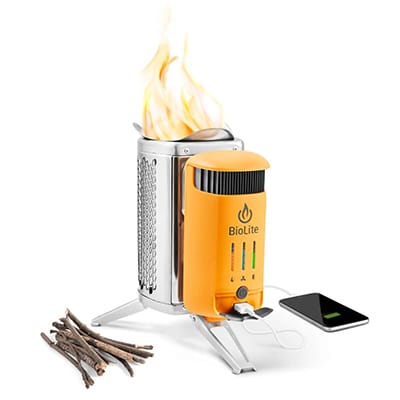
19) Traditional Cooking Options
While simple fires are the most cost-efficient survivalist heat source for cooking, there's always the option of using more traditional cooking appliances. The caveat is that you need to prepare alternative energy sources to power these appliances. We'll tackle this fully in a section below, but fueling a grill represents an option in the middle.
You could stock up on propane or charcoal to grill in the event of a SHTF scenario.
More Foods and Gear
20) Freezer Chest
As just mentioned, we plan to tackle alternative sources of energy later in this guide. If you are prepared to have sufficient power, a large freezer chest would be great to have to keep large quantities of meat.

21) Frozen Meats
If you can guarantee access to a cold freezer, a meat stockpile is a great, yet practical luxury.
For those hunters reading this, you likely already regularly store large quantities of meat. For the non-hunters, consider buying meat in bulk from a local farmer or online.
Websites like Butcher Box, allow you to pick and choose a variety of beef, chicken, and pork meat cuts. They're shipped to your doorstep frozen.
Like with canned foods, use and replace your meats over time. It's recommend to not throw out most meats after a year at most.
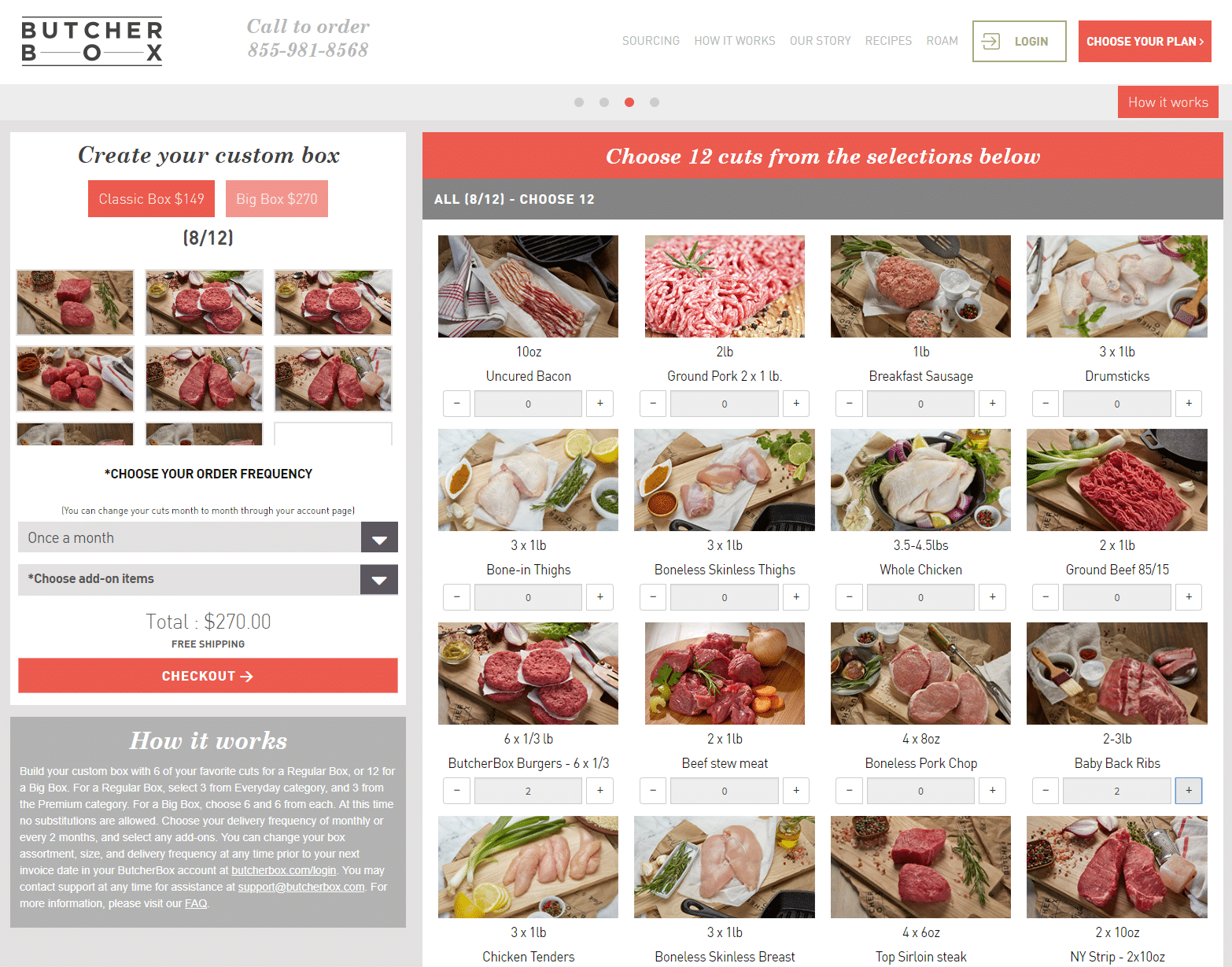
22) Vices and Luxuries
In many of the extreme scenarios we're prepping for, vices could bring some much needed help in relaxing and feeling a sense of normality.
- Alcohol - Stick with hard liquor, instead of options like beer than require cooling.
- Candy - Candy is a light weight sugary vice that may help kids cope with bad situations.
Whatever vices you prep for, just remember to prioritize the essentials first.
First Aid, Medicine, and Prevention

Whether you're prepping for SHTF scenarios or just for the unfortunate accidents of everyday life, first aid preparedness is a great way to help keep yourself and those around you safe.
Like in the other sections in this prepper gear list, we'll start with the essentials, then discuss supplies for more extreme preppers.
Lastly, if you're actively trying to meet fellow preppers, it's probably not a bad idea to befriend a nurse or doctor 😉
23) First Aid Kit
While not all encompassing, a good first aid kit is a great place to start. We strongly recommend keeping at least basic first aid supplies both at your home and in your vehicle.
You can find a good basic first aid kit on Amazon for a rather affordable price. Here's some of our preferred options:

Swiss Safe 2-in-1 First Aid Kit + Bonus Mini Kit
The Swiss Safe 2-in-1 first aid kit is FDA approved. For its reasonable price, we feel this is the most complete basic first aid kit available.
Its one major drawback would be that it's not waterproof.
The Swiss Safe 2-in-1 kit includes:
- 40 Medium bandages
- 10 Mini finger bandages
- 6 Sterile gauze pads
- 6 Antiseptic cleansing wipes
- 12 Alcohol prep pads
- 30 Cotton tips
- 4 Knuckle bandages
- 4 Fingertip bandages
- 4 Butterfly adhesive bandages
- 2 Disposable PVC gloves
- 1 Disposable instant ice pack
- 2 First aid tape
- 1 Large trauma pad
- 1 Compass
- 1 Moleskin blister relief pad
- 1 Triangular bandage
- 1 Emergency blanket
- 1 Whistle
- 1 Metal scissors (15cm)
- 1 Elastic bandage
- 2 CPR mask
- 1 Metal Tweezers
- 1 Sewing kit
- 10 Saftey pins
- 1 Glow stick
- 1 Pocket size first aid pouch
- 1 Non-woven pad
- 2 Sting relief pads

Tripworthy Compact First Aid Kit
The Tripworthy compact first aid kit is FDA approved and of medical grade quality.
While lightweight, this kit is a bit bulky. Combine this with the fact it's not waterproof and you may want to consider another option if you plan to pack this when hiking or doing other outdoor activities.
The Tripworthy Compact First Aid Kit Includes:
- 1 Abdominal bandage
- 4 Extra large adhesive bandages
- 3 Fingertip adhesive bandages
- 25 Standard adhesive bandages
- 10 Alcohol prep pads
- 4 Antibacterial ointments
- 10 Antiseptic cleansing wipes
- 6 Butterfly closure strips
- 3 Sterile gauze pads
- 1 Single-use cold compress
- 10 cotton swabs
- 1 CPR face mask
- 1 Elastic bandage
- 1 Emergency blanket
- 1 First aid tape
- 1 Glow stick
- 1 Metal Tweezers
- 1 Moleskin blister relief pad
- 1 Disposable poncho
- 1 Sterile razor blaxe
- 4 Saftey pins
- 4 Sting relief pads
- 2 Triangular bandages
- 1 Vinyl disposable pair of gloves
24) Prescription Medications
For those of you taking prescription medications, always be sure to store as much of a supply on hand as possible. This is especially true for those taking medicine for life-threatening issues.
If possible, get into the habit of refilling your prescriptions early, rather than refilling them when you're about to run out.
If your medication requires refrigeration, be sure to read our section on alternative energy resources below.
25) Antibiotics
In a worst case scenario, you may not be able to visit a doctor if you need antibiotics.
We are not medical doctors and cannot recommend this... but many in the prepper community suggest using antibiotics intended for fish to treat infections and illness. Many fish antibiotics are the same as those made for human consumption. ThePartriotNurse has made a YouTube video explaining if fish antibiotics are safe for humans.
26) Over the Counter Medications
While over the counter medications aren't likely to save your life, they can at least help treat your symptoms. Consider keeping medicines like Advil and Cold/Flu symptom treating medications around.
27) Tourniquets
In the event of serious bleeding, you'll want to have a tourniquet. Commercial tourniquets are always recommended over improvised options.
With that said, if you don't have a commercial tourniquet in your prepper supplies, you can make one from a rope (or tshit, ace bandage, rope, etc.) and a stick like object.
Remember, tourniquets should only be used on limbs and never on a person's neck.
29) Gauze and First Aid Tape
While your first aid kit may include gauze and medical tape, these items are so useful that we'd recommend getting extra.
30) Vaseline
Vaseline can be used to help with dry skin and lips. It can also be used as a quick temporary solution for protecting cuts and bruises from infection.
32) Sunscreen
Most people have used sunscreen to prevent sunburn, at least when at the beach or planning to be outside for a long period of time.
Remember, there may be situations where you end up spending more time than usual outside, so stock up on sunscreen.
33) Neosporin
Neosporin helps prevent infection when applied to cuts on your skin.
34) Bug Spray
As mentioned above, you may be forced to spend more time than usual outside during a SHTF scenario. Avoid itchy bug bites and their diseases with insect repellent.
35) N99 Respirator Masks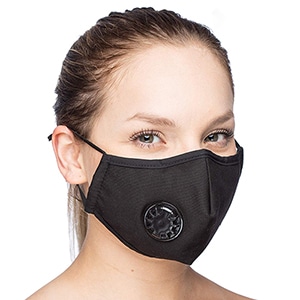
In the event of a widespread disease outbreak, protect yourself and your loved ones from airborne diseases with a respirator mask.
The "N99" label indicates the percentage of airborne particles the respirator filters out when you breathe. A N99 respirator, filters at least 99% of airborne particles, according to the CDC.
This mask, which comes with 6 filter replacements, blocks contaminants as small as 0.1 microns.
36) Gas Masks
Want to take it a step further and protect yourself from chemical, biological, radiological, and nuclear (CBRN) threats?
Then you need a CBRN rated gas mask.
You'll need both gas masks for yourself (and your loved ones) and filters.
Keep in mind filters have expiration dates. They're also only good for about 24 hours at protecting from threats, so you may want to stock up on filters, if you can afford it and deem it necessary.
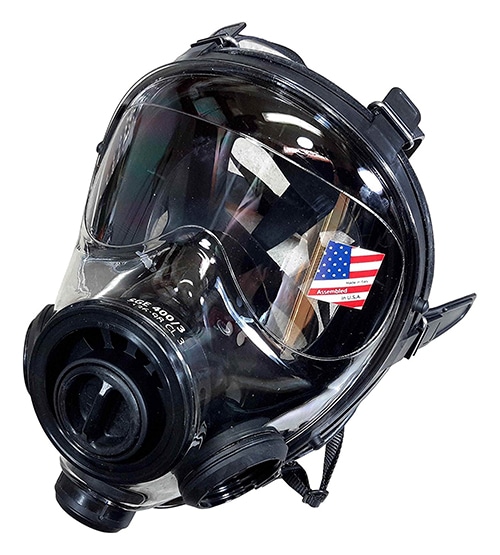
37) Hazmat Suits, Gloves, and Boots
A gas mask will protect your airways, but you'll also want to protect your skin and clothes from becoming contaminated.
These DuPont coverall suits include attached boot covers. Pair them with these gloves and boots to protect your whole body.
38) Potassium Iodide Tablets
Iodine is crucial for thyroid function. In the event of a radiological disaster, ingested radioactive isotopes like iodine 125 could be concentrated from your bloodstream by your thyroid. This can lead to damage to your thyroid and thyroid cancer.
Potassium iodide tablets are recommended during such a disaster, as the non-radioactive iodine will help to block the radioactive iodine from entering you thyroid.
Hygiene Supplies
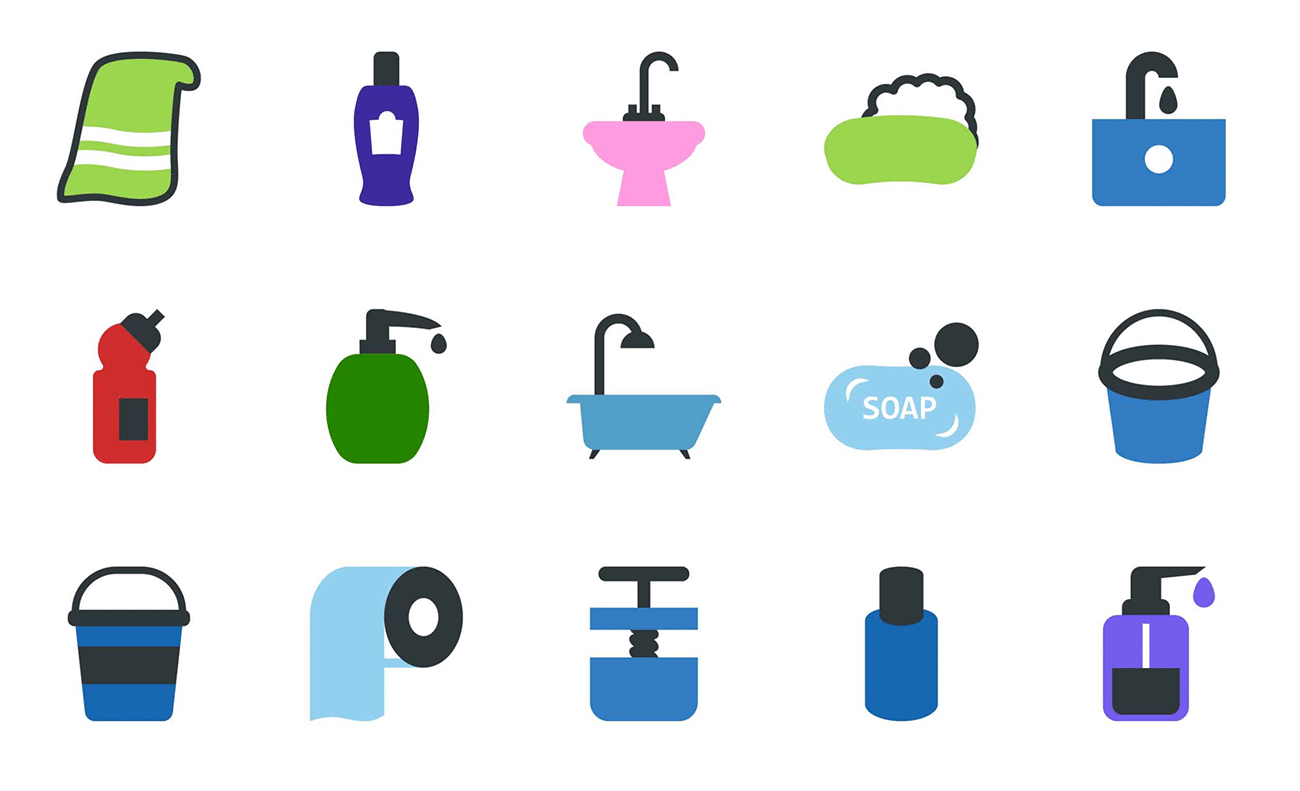
In a SHTF scenario, it's possible you'll face more bacteria and viruses than in your normal life. This makes it more important than ever to maintain good hygienic practices. In this section we'll include supplies for both personal hygiene and keeping your surroundings clean.
Many of these supplies are ones you already use in your daily life, but we've also added some additional items that may be needed in emergencies.
39) Shampoo, Soap, Body Wash
We'd recommend bulk unisex 2-in-1 body wash/shampoo. For example, these 128 oz jugs by Medline.
You could additionally or alternatively opt for bars of soap and shampoo.
40) Antibacterial Soap
Antibacterial hand soap is also of course on our list.
41) Portable Shower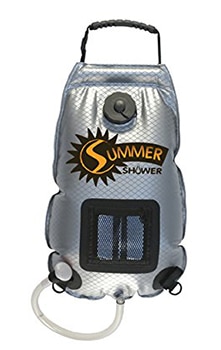
You may not always have access to clean running water. In these circumstances, you'll instead need to opt for bathing or alternative shower solutions.
Showers typically use less water and are more sanitary than baths. For these reasons, we'd recommend a portable shower.
There's a large variety of affordable portable shower options, many of which use solar power to heat the water. To be safe, be sure to use clean water.
42) Personal Wipes
Since you likely won't always have access to running water, wipes like Wet Ones are a great alternative for cleaning your hands and body.
43) Hand Sanitizer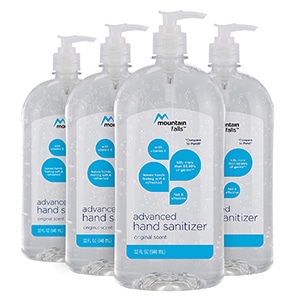
Hand sanitizer, which kills 99.99% of germs, is another great alternative for when you don't have access to running water.
One of the few handy tips I've ever actually seen on the subreddit "/r/LifeProTips" is that hand sanitizer gets rid of body odor. This happens because Ethyl Alcohol kills the bacteria causing you to smell. The world may end up in crisis, but that does not necessarily mean you need to smell!
44) Clorox Wipes
The same way wipes and hand sanitizer make cleaning yourself easier, Clorox Wipes or similar products make keeping your surroundings clean easier.
45) Cleaning Products
It's also a good idea to stock up on all of the house hold cleaners you'll need. Things like:
- All-purpose cleaner
- Baking Soda
- White Vinegar
- Bleach
- Etc.
You'll also need sponges, cloths, and rags.
46) Tooth Paste and Toothbrushes
Remember to not only keep your body clean, but your teeth clean as well. Stock up on toothbrushes and toothpaste.
You may also want to store extra mouthwash and floss.
47) Toilet Paper and Baby Wipes
Bathroom time before toilet paper was invented was pretty disgusting. For those not wanting to use leaves, "stones and clay", or a "sponge on a stick" we'd recommend stocking up on toilet paper.
Baby wipes are also a great idea, not only for babies but for adults. Wet wipes typically offer a more efficient wiping experience than dry toilet paper.
48) Toilet Alternatives
Your toilet will be yet another victim if running water shuts off. Check out this article for tips on handling bodily waste in emergency situations.
49) Clothes Washing Alternatives
Similar to toilets, you may no longer be able to use your clothes washing machine. Here's an article of alternative ways to wash clothes.
50) Feminine Hygiene Products
For the women reading this, I'll leave this one up to you.
51) Straight Razor and Sharpener
For those still wanting to shave during a disaster, a good old fashioned straight razor is your best bet. So long as you have a sharpening tool like a whetstone, a straight razor will be cheaper and last longer than modern razors.
52) Nail Clippers
While scissors or a knife may technically be an option, it's a lot easier and safer to make sure to have nail clippers with you.
53) Other Hygiene Products
Start taking note of all the hygiene products and cleaners you use regularly. Make a list of all the ones you feel you couldn't live without and stock up on them.
Here's some additional suggestions to consider:
- Deodorant
- Shaving Cream or Gel
- Tweezers
- Lotion
Firearms, Hunting Gear, and Home Defense
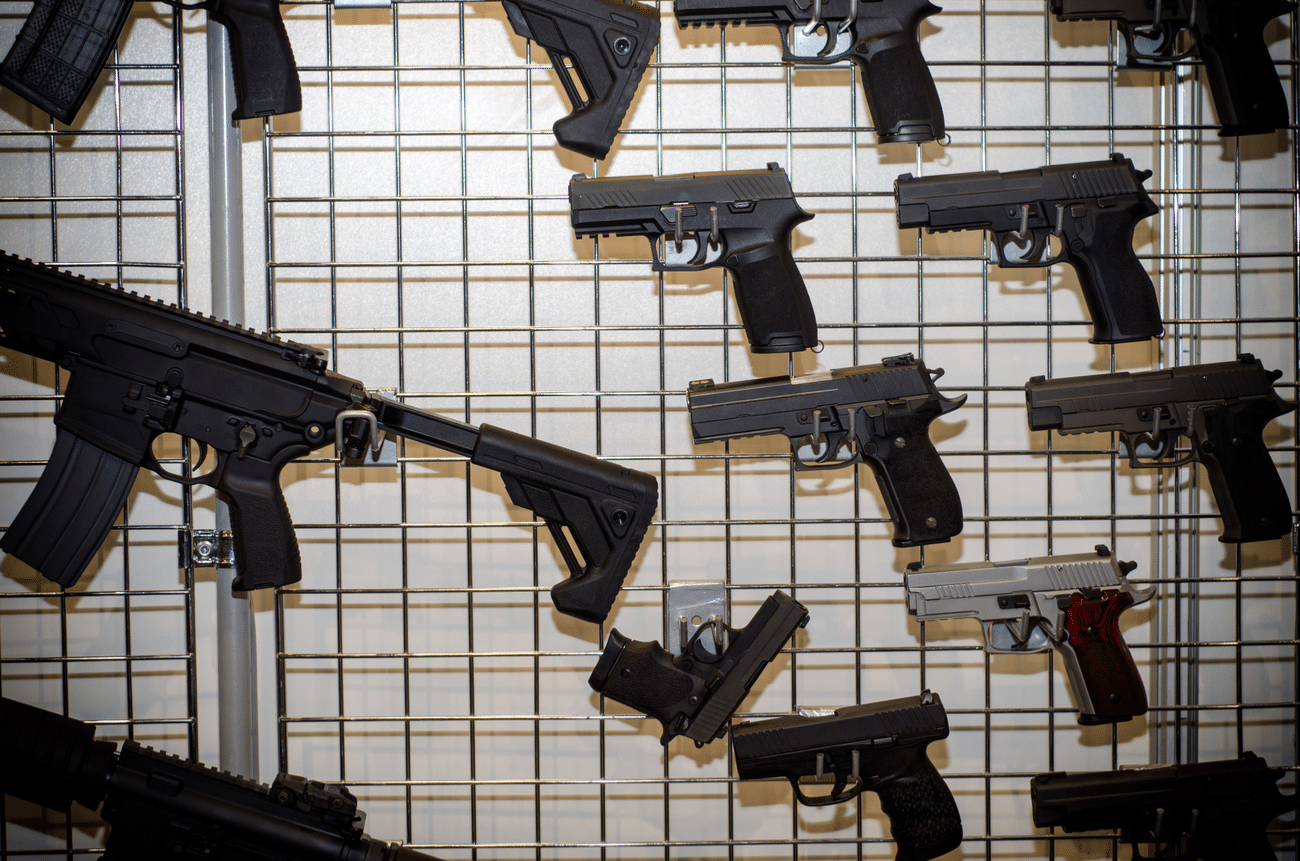
So let's say you took our advice to heart and stocked up the prepper supplies on this list. While you've certainly helped improve your chances of surviving a SHTF scenario, you may have also put a big target on your back. Anyone who is aware of the steps you've taken to prepare, may try to take your supplies.
In this section, we'll be suggesting guns not only for self-defense, but also for hunting. Ideally in many SHTF scenarios, you'd have the ability to hunt for food.
Lastly, we'll be covering some other gear to help you secure your property.
Guns & Ammo
When it comes to firearms, everyone has there own thoughts and preferences. In these sections, we'll make suggestions based on what we feel is most important as a part of your prepper gear.
For those concerned with self-defense and hunting, it's likely a good idea to have a large stockpile of guns and ammo.
Disclaimer: Always be sure to follow all federal, state, and local gun laws.
54) AR-15

If you could only have one gun when SHTF, an AR-15 style rifle is your best option.
AR-15s are:
- Widely available for purchase.
- Excellent for defense, especially against multiple attackers.
- Able to be used for hunting, though the 5.56 cartridge is
- Highly customizable, with a wide range of available optics, scopes, and accessories.
- .223 and 5.56 ammo is relatively affordable, compared to other defensive rifle rounds.
There are a ton of options available for AR-15s and we'd recommend checking out this list of the best complete AR-15 options.
These are the AR-15 manufacturers we feel most comfortable going with for a rifle that you plan to use to defend yourself with:
- Top Tier
- Bravo Company (BCM)
- Daniel Defense
- Larue
- Lewis Machine & Tool
- Knight Armament
- Noveske
- Yankee Hill Machine
- Mid & Budget Tier
- Aero Precision
- Smith & Wesson
- Rainier arms
- SIG Sauer
- Palmetto State Armory (VERY Affordable)
- Colt (Historically great, though we have some concerns over their quality control in recent years.)
- FNH
- Anderson
- Ruger
Alternatively, you may decide that you want to build your own AR-15(s). If you're comfortable doing so, we highly recommend it, as it allows you to tailor your rifle to your needs and wants.
For choosing parts, this AR-15 parts resource has great explanations of what to look for. It also offers recommendations for the best products.
Those of you who are on a budget can even consider buying parts as you have the funds available and build your rifle as you go.
Under federal law, the lower receiver is legally the "firearm", meaning that's the only part you have to purchase through an federally licensed firearms dealer (FFL). All other parts can be bought online and shipped directly to your door.
55) Concealed Carry Pistol
Even without a catastrophic scenario, there's still a chance that you may need to defend yourself in your daily life. We strongly recommend all law abiding citizens take advantage of their right to carry a firearm... though, best of luck if you live somewhere like California or New York.
Guns To Carry is a great resource for concealed carry laws for every state.
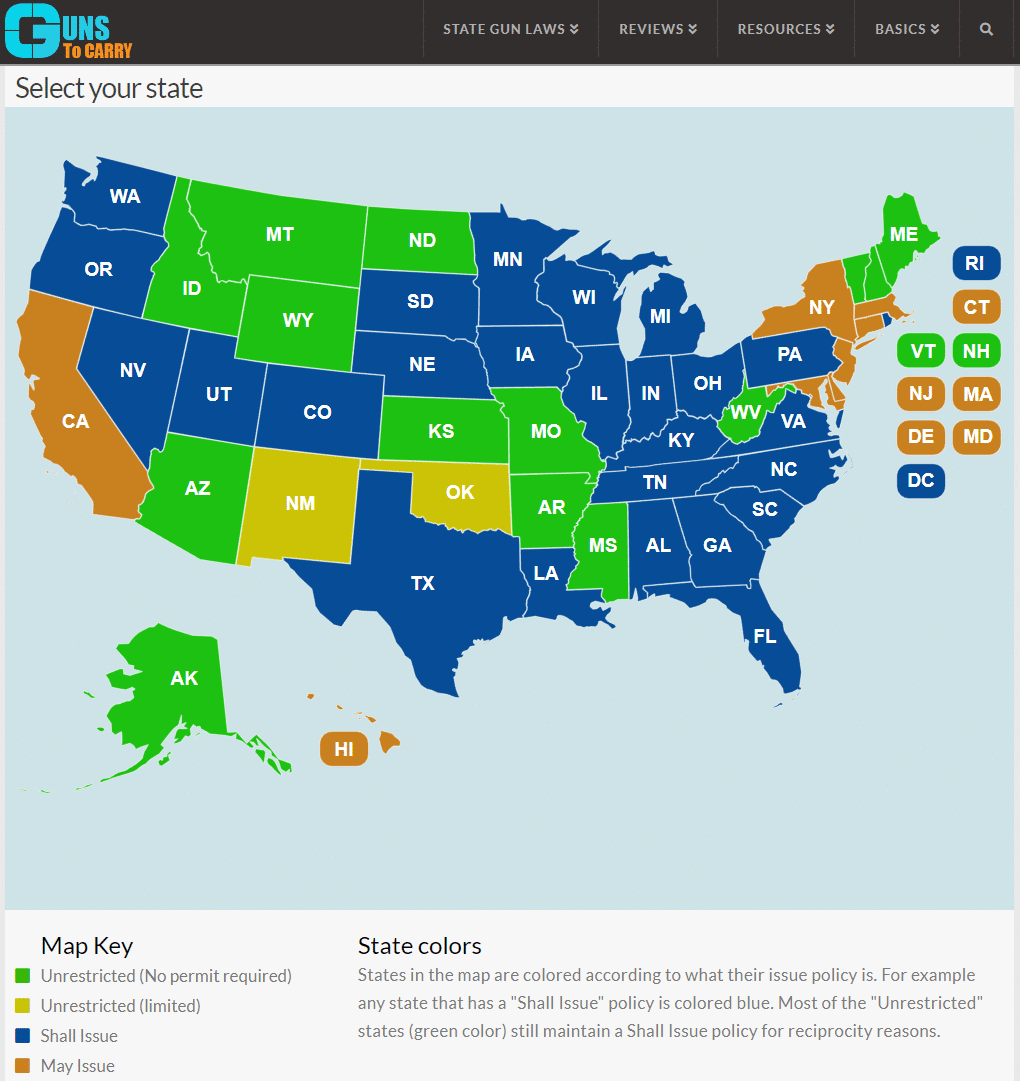
(Source: gunstocarry.com)
There's a lot of debate over what the best pistol calibers are, but we personally recommend 9mm, as it is:
- The cheapest handgun ammo that is sufficient for self-defense.
- Readily available.
- Almost anybody who is able-bodied is capable of handling the recoil of a 9mm pistols, whereas this might not be the case for larger calibers like 45 ACP.
- Used by the U.S. Military, NATO forces, and the majority of police world-wide.
Generally speaking, a single stack 9mm pistol is the best option for concealed carry, in our opinion. You can check out the best single stack 9mm pistols here. Gun Digest has a great article for choosing a concealed carry holster.

Glock 43, a favorite of concealed carry owners.
56) Sidearm Pistol
In the event of an actual SHTF scenario, chances are you'll be less concerned about concealing a firearm, instead favoring an increased magazine capacity.
For that, we recommend a full side pistol as a sidearm. Again, we favor a 9mm pistol as the best option.
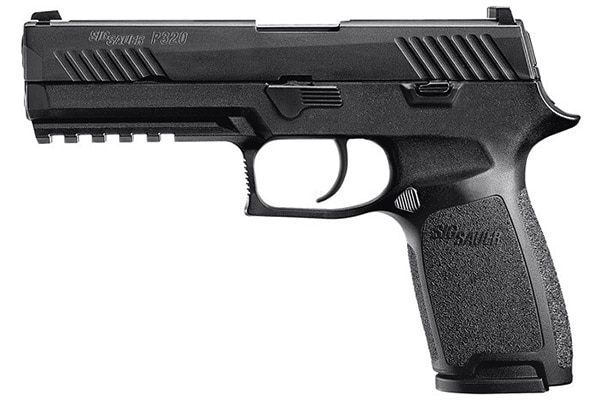
Here's the pistol manufacturers we recommend:
- Glock - The go to manufacturer for most civilians and police forces.
- SIG Sauer - A Personal favorite and the manufacturer of the new U.S. Military's M17.
- FN
- Smith & Wesson
- Springfield
- CZ
- Beretta
- Walther
- Ruger
57) .22 Pistols and Rifles
The .22 caliber is a favorite among preppers because its incredibly affordable (as low as $.05 per round) and readily available.
Another huge benefit is that it's a chambering commonly found in both pistols and rifles.
While the .22 caliber is far from optimal for self-defense, it has a chance to get the job done if it's your only option. However, this caliber is ideal for hunting small game.
Check out the best .22 pistols and the best .22 rifles.
58) Shotguns
Shotguns are great for both home defense and hunting. While I'd personally opt for an AR style rifle before a shotgun, there's certainly some who would disagree.
59) Ammo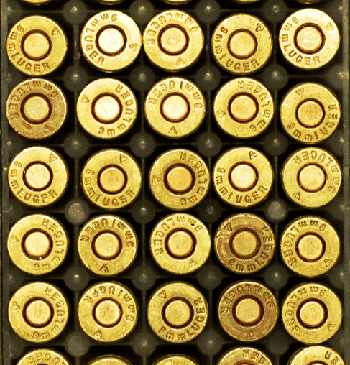
Though I recommend having as many guns as possible, they're useless without ammunition.
You can never have enough ammunition and I choose to buy it in bulk from websites like Ammo.com and Lucky Gunner. These websites are able to ship ammo directly to your door, with the exception of residents of a few states.
The plus side of sticking to a few calibers (like .22 LR, 9mm, and .223/5.56) is that ammo you purchase can be used in multiple firearms of yours.
60) Hunting Rifle
If you live in a location with Big Game, it's a good idea to have at least one rifle specifically geared towards hunting it.
